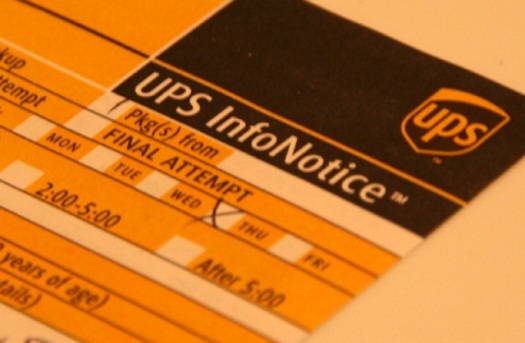The 7 communication blocks that push your customers away

“Noisy Ned needs nuggets” I whispered in his ear.
He heard, “Noisy Nick needs Knock-its.”
“Counting cars quietly” became “stomping clothes quietly.”
You need at least 3 people to play the telephone game. If you’ve played you know the more people you have in line, the better.
The game starts with a simple phrase or sentence. Everyone in your group stands in a circle and you take turns whispering the phrase to each other. The last person says what they think they heard outloud to the whole group. Inevitably, it comes out quite different from what was said at the start and everyone gets a laugh.
The nature of the game is to find humor in the destruction of the original message. Communication breakdown is expected and celebrated.
Websites experience the same kind of communication breakdown
A customer lands on your website and immediately leaves. They’re reading content on your page but don’t understand, so they move on rather than sticking around and asking for help. It could be they aren’t getting the information they want from you. Or they don’t understand what you’re telling them. You can’t be sure on the reason why, but your bounce rate is through the roof.
There’s a reason you need their attention
You have a message you need to communicate to your audience. You want them to understand your unique offer. They have a problem and you know just how to fix it. You’re looking to keep things simple, to provide value with clarity, but you’ll never get that chance if you can’t hold their attention.
Just because you have their attention doesn’t mean they’re listening
People communicate all the time, but that doesn’t mean their message is received. Many fall into the trap of thinking what they say doesn’t matter as long as they say something. Does your message add value? Are you cutting through the noise or just adding to it? Is your message understood? If your content fails to answer questions your audience wants answers to, you’ve blocked them.

Think of a communication block like this.
When there’s a communication block, there’s no communication
Which is a nice way of saying they’re not listening. There are 7 communication blocks (4 clarity blocks + 3 delivery blocks) you’ll need to avoid to communicate clearly with your audience.
What’s that? All I’m getting is Blah, Blah, Blah…
The most obvious communication block is one we’ve likely all had experience with. We see the message sender is trying to tell us something but we don’t understand what they’re trying to say. When this happens one of the 4 clarity blocks may be to blame.
1 Can a 5th grader understand your Language?
This isn’t something Google translate can solve for you. If your web copy is foggy and difficult to understand, you’ll need to fix that. Are you using jargon? Academic or highly technical writing is a bad idea if it’s past your audience’s reading level.
You’ll need to craft a meaningful message without being condescending or patronizing to your readers. Clear and simple can be challenging if the topic you’re working with is a technical one. But the more clarity you provide, the more likely they’ll understand; that’s important because clarity is the first step to conversion.
2 Structure keeps readers from getting lost
Just like a good joke places the punchline at the end, good communication follows a predictable structure. Without a good structure a reader gets lost. They end up asking themselves, “What’s the point? What is this about again?” Take a look at something you’ve written, are you wandering? Why should a reader follow you?
Structure begins with focusing on your reader. What’s the reason for them to read? What problem are you solving? Do you attract and guide their attention? Writing something “just to fill the space” wastes your time and turns away your visitors. You should always start with a single thought and a clear purpose.
3 Have you checked for gaps or missing information?
Logical, sequential or related information shouldn’t be separated when they’re expected to be grouped together. If I’m on an Amazon web page shopping for pants I want to see everything I need to know about those pants on that page. I shouldn’t have to leave the page to find the size chart. A customer wants to see the price, materials and care instructions in one place. Your content should do the same, regardless of whether you’re selling products or services.
4 Are you confusing people with mixed messages?
Mixed messages show up in all sorts of ways. Put your self in the customer’s shoes for each of these examples.
- A software developer claims their application is very thorough, but fails to thoroughly describe their product to you.
- A high end retailer tells you their product is made from the highest quality materials but their website, marketing or packaging looks like the cheap low quality stuff you’d get from a discount store.
- What if your internet provider bragged about their high speed internet, sending you to a website that’s slow when it’s up and down the rest of the time?
It’d be tough to take each of these companies at their word right? It’s the same with you. Make sure you’re not sabotaging the message you want to send.
Sabotage is still a problem even when your message is clear.
Clarity is no cure for delivery. Even when you’ve crafted a clear and compelling message you can still run into problems. A clear message doesn’t work if you can’t deliver it properly. The last 3 communication blocks affect message delivery.

A delivery block is like telling customers to come back later, but you know they won’t.
5 It’s noisy around here, isn’t it?
The number one and most unavoidable communication block you’ll have to deal with is noise. I’m sure we can all relate to those moments where you’re in the middle of something and you get pinged. You have new emails, tweets, chat messages coming at you all hours of the day and night.
Information and demands for our attention are everywhere. There’s a lot of value and a lot to be learned online, but to find it we have to sort through loads of junk. Not everything is going to be relevant to us and we’re only going to want to pay attention to things that spark our interest, make us laugh, or help us in some way.
Which means your message has to cut through the noise to reach your audience

The web is like Times Square, there’s lots of things competing for attention
And your audience has a lot going on too. It’s not just online noise they have to deal with (although there’s plenty of it). Your audience is living, breathing, with everyday problems, relationships to maintain and jobs to do. They have homes to maintain, people to take care of and minds which need down-time and pleasure.
You can’t eliminate noise completely, but you can make sure you’re adding value, to reach and affect real people. But that only works when you’ve taken the time to know your audience as a real person.
6 What if you’re speaking to the wrong audience?
Have you ever received the wrong order? Instead of the Eggplant Parmesan you were expecting your server brings you Chicken Alfredo. Both dishes are delicious, but how happy are you that your server got it wrong? Does it matter how good the Chicken Alfredo is when you’re expecting something else?
Imagine you’re car shopping and the salesman keeps trying to push you towards a vehicle you have no interest in. You want an SUV but he keeps pushing you to look at pickup trucks. Not only is that annoying, it’s very ineffective. It doesn’t matter how awesome the truck is if it’s not what you want.
Your customer should want what you’re offering and they should be able to afford it. Make sure you’re selling to a real person that wants your product and can afford to pay for it. Anything else and you’re just wasting your time, no matter how good your offer is.
Just because it’s good doesn’t mean I want it. And just because I want it doesn’t mean I can afford to buy it. Your target audience needs to meet both criteria.
7 Are you overloading your customers with an infodump?
Even when you’ve got a clear message and you’ve managed to deliver it to your audience you can still make mistakes in your delivery. Ever heard that phrase, “Too much of a good thing…”? Providing too much or, poorly organized information leads to overload. And overload slows down (or stops) the decision making process.
Because the decision making process isn’t a single yes or no
The big yes follows a series of little yeses. Communication blocks get in the way, causing a “No” and a quick exit at any point.
Imagine a man proposing marriage on a 2nd date. More than likely, it’ll be received with raised eyebrows and an awkward “No!” Because generally, it’s going to take a lot of small yeses before someone is ready to commit to a marriage.
Examine your process and look for every action. At each action step you’ll find an opportunity for “yes” (keep going) or “Nope! I’m outta here!” And, it’s at each of these points of action where communication blocks have the opportunity to screw up your sales process.
Don’t let the communication blocks ruin your sales process
First, examine your process and find every action step. Find every micro-yes that can possibly occur. Write it down. Know it. View every opportunity for your visitor to leave and give them reason to stay.
You can’t give someone a reason to stay unless you’ve got something they want
Know your target audience. Know your product or service. What problems are you solving? How are you going to fix or fulfill a need? If they’re able and willing you have a golden opportunity. Don’t sabotage yourself by mucking up the waters.
Keep your message clear and relevant
Use language that’s easy to understand, form your message with structure so it flows well and makes sense to the reader. Don’t leave holes or gaps in the information your customer needs. Examine yourself for mixed messages and fix those.
What if your product speaks for itself?
You may think your product or service speaks for itself. That you don’t need to focus on communication blocks. Your attitude may be along the lines of “everyone wants what I’m selling”. That sound like your product?
You’re mistaken.
No product can be all things to all people. Even something as simple and basic as water fails to be all things to all people. Some people want bottled water. There’s filtered water, caffeinated water, flavored water and vitamin water. There’s water for businesses and water for kids.
In each example there’s a focus. When you focus, you speak to a specific problem that matters to a group of people. Which is something you can’t do as a generalist.
“It doesn’t matter what I write, people don’t read anyway”
People read but not the way we’d like them to.
Most of us think customers sit down and read through our content from beginning to end (at least we’d like them to). But that’s rarely the case.
Most people bounce around.
They find the elements that matter to them. They’re not going to look for answers to every possible objection, they’ll look for answers to their objections. They’ll bounce around looking for the bits and pieces they can relate to.
If you’re giving your audience what they want they’ll realize you understand them.
But you won’t know which details are most important to each and every customer – which is why it’s important to tell the whole story. They’ll self-select and identify with what matters to them.
Don’t go so far down the “less is more” path that you end up with nothing. If someone is curious, they’ll dig deeper. If they’re motivated by a want or need they will search for something to fill that. Arguing that less is more means you’ve missed the boat. It’s about relevance and value.
And value’s the real reason the telephone game shouldn’t be part of your business
It may be fun to laugh over communication breakdowns when we’re playing a game, but communication blocks are devastating to your business. Keep them around and you destroy any message you send to your customers. Flush them out and suddenly customers are eager and ready to buy.
